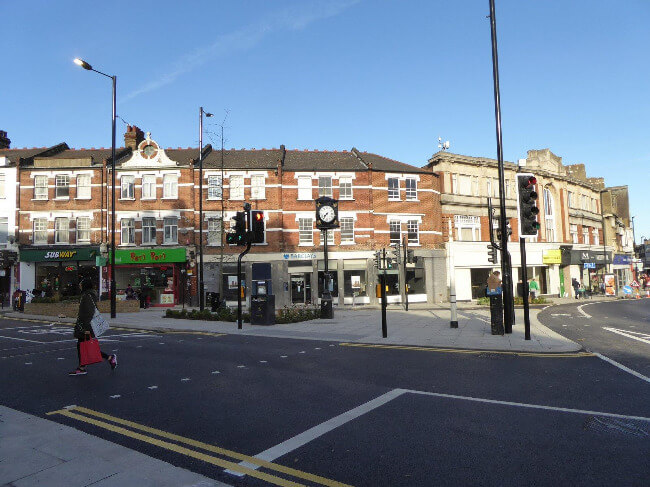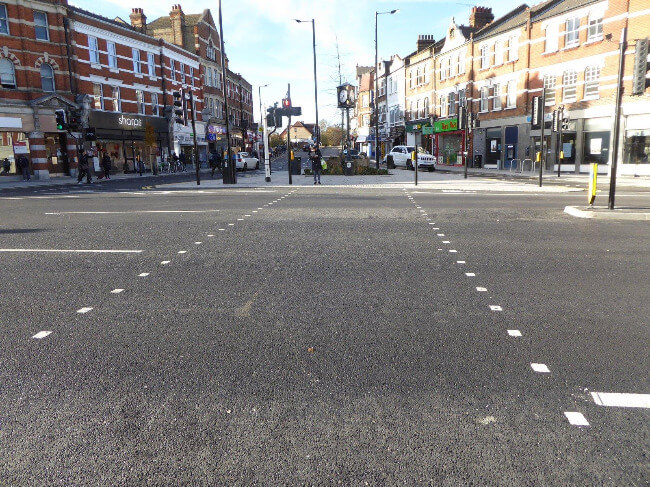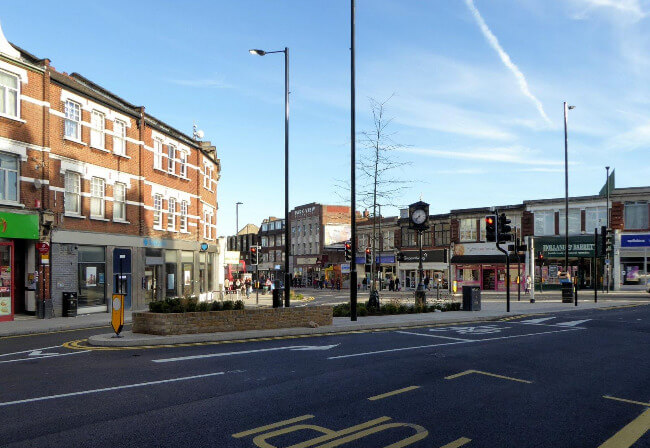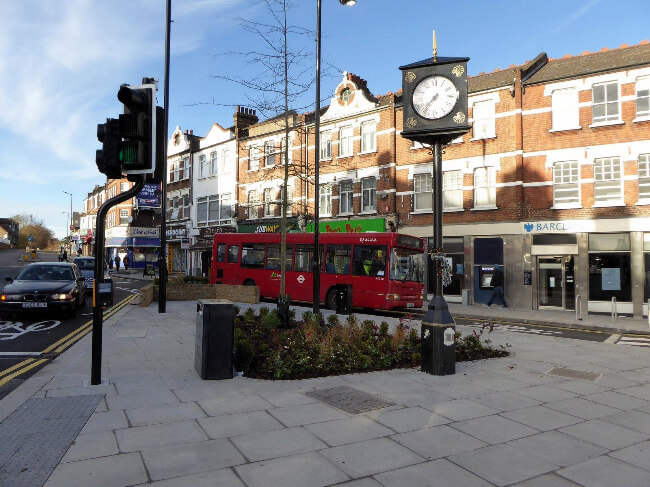Forum topic: The reconfigured Palmers Green Triangle
The reconfigured Palmers Green Triangle
Colin Younger
20 Nov 2017 00:26 #3351
- Colin Younger
-
 Topic starter
Topic starter
Share
![]()
![]() Share by email
Share by email
Please Log in or Create an account to join the conversation.
The reconfigured Palmers Green Triangle
Darren Edgar
23 Nov 2017 11:50 #3360
- Darren Edgar
-

Share
![]()
![]() Share by email
Share by email
Please Log in or Create an account to join the conversation.
The reconfigured Palmers Green Triangle
Colin Younger
26 Nov 2017 18:38 #3367
- Colin Younger
-
 Topic starter
Topic starter
Share
![]()
![]() Share by email
Share by email
The tree in the triangle is a Pin Oak, selected at this size to give it the best opportunity to settle in. This is a challenging location in terms of underground toilets etc. Lots of unseen work occurred to create the best conditions for it.
[Information added by me: Pin Oaks originated in North America but have been planted in the UK since 1800. It is more slender and elegant than the native oaks, with a more conical canopy that makes it suitable for city planting where space is limited. It thrives on heavy clay in built up urban areas. It has good autumn colour: russet bronze flushed with deep orange. Pin oak is a medium-sized tree growing to 18–22 metres (59–72 ft) tall, with a trunk up to 1 metre (3.3 ft) diameter. It has an 8–14-metre (26–46 ft) spread.]
Unfortunately, despite trying, it hasn't been possible to plant trees in outside what was Starbucks. The area is riddled with utilities and a whole host of old cables and pipes - this caused a lot of challenges. However a rain garden has been placed in the area.
The brick planter at the apex of the Triangle will have benches added to it (made to measure) on all 3 sides. Rather than create seating around the tree additional planting and some up-lighting has been built in. [Uplighters were suggested at one of the design workshops.]
It is possible that some information about the history of the Triangle including about the suffragettes might still be included.
There may be scope for additional free standing planters - at the moment the focus is on completing the remaining works along the high street. Once complete other possibilities could be considered.
Please Log in or Create an account to join the conversation.
The reconfigured Palmers Green Triangle
Roger Blows
28 Nov 2017 10:50 #3369
- Roger Blows
-

Share
![]()
![]() Share by email
Share by email
Please Log in or Create an account to join the conversation.
The reconfigured Palmers Green Triangle
Denis Piggott
30 Nov 2017 16:51 #3378
- Denis Piggott
-

Share
![]()
![]() Share by email
Share by email
By the way, excuse my ignorance, but what is a 'rain garden'?
Please Log in or Create an account to join the conversation.
The reconfigured Palmers Green Triangle
David Hughes
30 Nov 2017 21:46 #3381
- David Hughes
-

Share
![]()
![]() Share by email
Share by email
Personally I haven't stopped to enjoy the new island; just cycled through or paused at the traffic lights. As far as its visual appearance is concerned I'll wait till after Christmas to take a good look.
Please Log in or Create an account to join the conversation.
The reconfigured Palmers Green Triangle - what is a Rain Garden?
Basil Clarke
30 Nov 2017 22:38 #3383
- Basil Clarke
-

Share
![]()
![]() Share by email
Share by email
Rain gardens are one form of "sustainable drainage system" or SuDS.
So if there is sustainable drainage, then logically there must be unsustainable forms of drainage. Unfortunately, there's a lot of them around. Gutters and drains in roads, for example, tarmaced over gardens. When it rains heavily on impermeable surfaces, large quantities of water rush along the gutters and go down the drains. That water, full of impurities from the road surface, such as heavy metals, ends up flowing into streams - locally, the Pymmes Brook, thence into the Lea, and is damaging to flora and fauna (or may encourage some undesirable flora and fauna at the expense of more desirable ones).
The idea of sustainable drainage is to get water to soak into the ground and/or be slowed down and filtered by vegetation and "wetlands". The net result is that water flows more evenly into the rivers istead of in spurts and less water rushes down tarmaced hills and causes flooding at the bottom.
The above is terribly oversimplified. The page below explains it much better than I ever could and has some pictures:
www.thames21.org.uk/sustainable-drainage-systems/
Good examples of SuDS round here are in Grovelands Park, Houndsden Spinney (a great place for wild garlic!) and, above all, Firs Farm.
Please Log in or Create an account to join the conversation.







